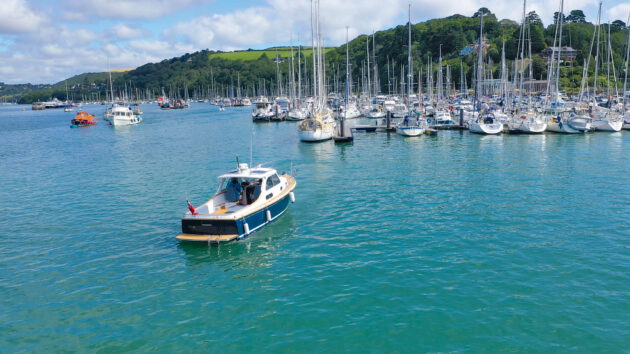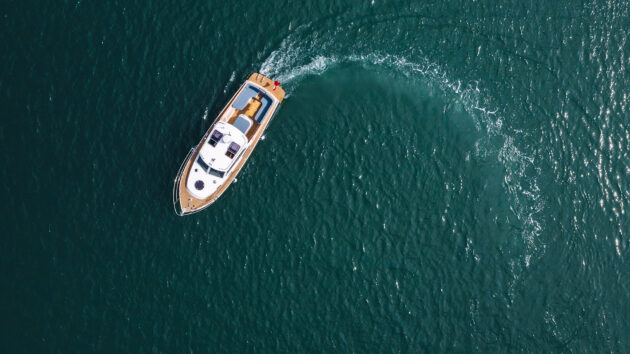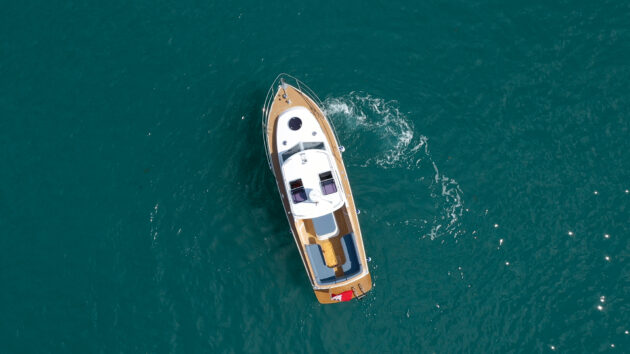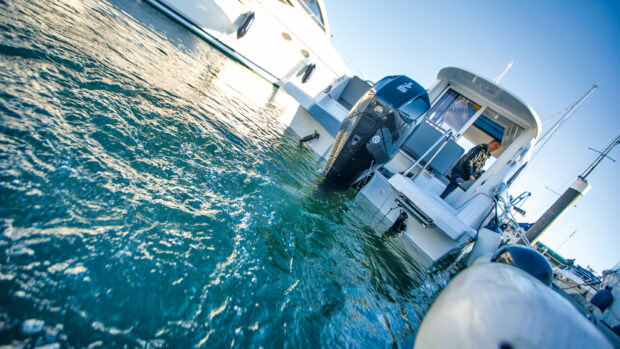For his latest guide Motor Boat & Yachting's resident expert, Jon Mendez talks through how to handle a single shaftdrive boat
Single shaftdrive boats are relatively rare these days but the reduced costs of buying, servicing and fuelling such a simple but reliable drivetrain does mean they are making a bit of a comeback. The main disadvantage is that single shaftdrive boats aren’t as manoeuvrable as twin-engined ones or those fitted with sterndrives or outboards.
There are millions of yachts out there with this set-up, and they seem to manage okay, so what’s the difference? Well yachts usually have deep keels and larger rudders to give maximum stability and steerage at speeds below 10 knots.
Motor boats on the other hand tend to have shorter keels and smaller rudders to reduce drag and steering effect at speed. The flipside of this is that they also have less directional stability and steering effect at lower speeds, making them more sensitive to being blown about by the wind.
So before helming a single shaftdrive boat, it’s worth finding out a bit about its hull shape. It may have no keel at all, a small stub keel or, like this Duchy 27, a longer keel which protects the propeller. This will give the first clues as to how it’s going to handle.

Look out for unwanted stern movement when using the bow thruster
Your next job is to establish which way the propeller turns. If the shaft is easily accessible, you can simply watch which way it rotates, or if that’s difficult, you can watch which way the stern moves and how water exits from the hull when the engine is engaged.
All propellers have something known as prop walk or transverse thrust. It is most apparent in astern gear, as the blunter transom makes it easier for the propeller to move the boat sideways rather than backwards. So as astern gear is engaged, you can usually observe the stern of the boat moving to one side and the wash from the propeller exiting amidships on the opposite side. This turning effect can be harnessed to give you a ‘best’ direction when attempting to turn the boat.
Your next job is to find out how well the boat steers astern. On some, the rudders will steer the boat in both directions. On others, the prop walk overpowers the rudder and it will only steer in the direction the prop wants.
Article continues below…

How to guard against fire on board a boat

Expert skills: How to get more from your depth sounder
You also need to see if a ‘dab’ of power helps the situation by making the turn tighter or if it makes it worse. Having established the propeller rotation, try going ahead with the helm hard over to starboard and then to port.
Complete a full circle in both directions and look carefully at how they differ to see if it turns quicker one way than the other. Now see if you can combine this with the astern prop walk to get a nice tight three-point turn working in both ways or just one. This knowledge will aid the approach to every manoeuvre you make.
One technique that is useful in ahead gear is to use a small blip of power after engaging, as you can then squirt water directly onto the rudder and really aid turning without too much forward momentum. Lastly, if you have a bow thruster, see how powerful it is. Does it move the bow much? Does the stern go the other way and if so, by how much?
Check hull shape
The shape of the hull plays a large part in how your boat will handle. This Cockwells Duchy 27 has a shallow but almost full-length keel, which aids directional stability in ahead but makes steering astern more difficult.

Propeller rotation
The Duchy has an easily visible shaft, which makes it easy to see that it rotates clockwise in ahead and anti-clockwise in astern. This means that it will pull the stern to port in astern gear.

Static test
If you can’t see the shaft, you can still check it when tied up by engaging astern gear and seeing which way the boat moves. Here you can see the stern has moved to port, pushing it against the pontoon.

Straight astern
With practice, you can go in a fairly straight line astern by using a burst of power to get the boat moving backwards, then going into neutral so the rudder can work without fighting the prop walk effect.

Turning ahead
Try turning ahead in both directions to see which is tighter. In this case, our circle to starboard is slightly tighter than to port, aided by the propeller turning to the right in ahead and hence moving the stern to port.

Bow thruster test
When the bow thruster is used, you can see that although it moved the bow very nicely to port, it also moved the stern to starboard. That could make it hard for the crew to get a stern line ashore.
 If you enjoyed this….
If you enjoyed this….
Motor Boat & Yachting is the world’s leading magazine for Motoryacht enthusiasts. Every month we have inspirational adventures and practical features to help you realise your sailing dreams, as well as tests and news of all the latest motorboats.
Plus you’ll get our quarterly Custom Yachting supplement where we share the last on offer in the superyacht world and at the luxury end of the market.
Build your knowledge with a subscription delivered to your door. See our latest offers and save at least 30% off the cover price.






 If you enjoyed this….
If you enjoyed this….





